My parents don’t recall the sound of the bomb but they remember the building they were in shaking from the blast.
A half-century later, certain images stick in their memories. My father remembers that every other building on Castle Lane in the heart of Belfast’s shopping centre had its windows blown out as the boom reverberated down the narrow street in a zig-zag motion.
There was the sight of an injured woman whose calf had been blown off, but was still retained inside her tights. People’s hair matted with dust, like someone had rubbed talcum powder in. One man, his hair full of dust, wandered about aimlessly, shell-shocked from the blast.
Tomorrow is the 50th anniversary of the IRA's Abercorn bomb. Rosaleen McNern & her sister Jennifer were shopping for a wedding dress. They stopped for a coffee & suffered life-changing injuries. Two other young women, Janet Bereen (21) and Ann Owens (22), were killed. Never again pic.twitter.com/frDYPsodct
— Suzanne Breen (@SuzyJourno) March 3, 2022
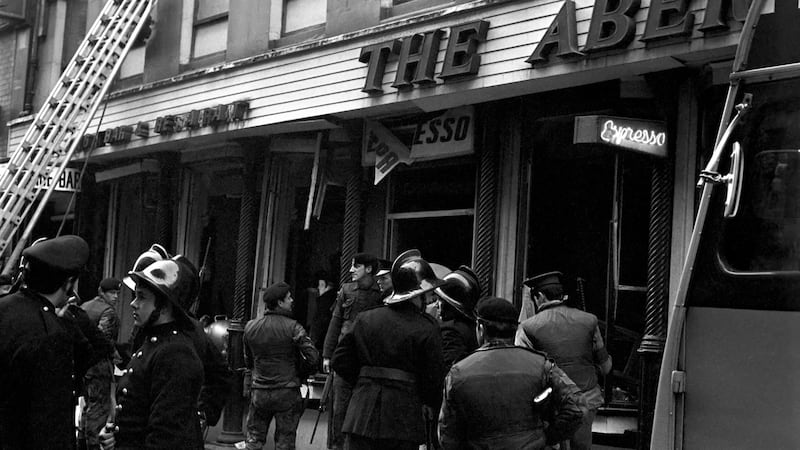
Growing up in the South, I was aware of the Abercorn and what happened there 50 years ago; that it was a significant event for my parents and that it was a moment when the Troubles touched their lives. It was something they talked about from time to time if you ever asked them about the Troubles and what was Belfast like before they left for a new life in the Republic.
It was the randomness of how easily your life could just end. That is what I couldn't take any more about Belfast
The bombing of the Abercorn restaurant in Belfast city centre was a horrific act of violence, indiscriminately inflicted on everyday people going about their everyday lives.
The victims were mostly young women enjoying cups of tea and coffee in a packed restaurant on a Saturday afternoon on a busy shopping day. For my parents, it was the start of a chain of events that led to the fork-in-the-road decision for them to leave Northern Ireland.
"It was the randomness of how easily your life could just end. That is what I couldn't take any more about Belfast," says my mother, Beryl Carswell, of those unpredictable times.
“I really admire our families and friends, and everyone who stayed on living in that because it is a great city and the people are great – they have amazing resilience – but I couldn’t do it.”
On March 4th, 1972, Beryl McGettrick, then a 21-year-old student nurse at the Royal Belfast Hospital for Sick Children, went shopping with her fiance, Des Carswell (20), a qualified aircraft engineer at RAF Sydenham – on the site of what is now George Best Belfast City Airport.
It was eight months to their wedding and they were scouring Harry Fenton’s, a clothes shop on the corner of Castle Lane and Callender Street, for a suit that my father might wear when they headed off on their honeymoon. That was the tradition then.
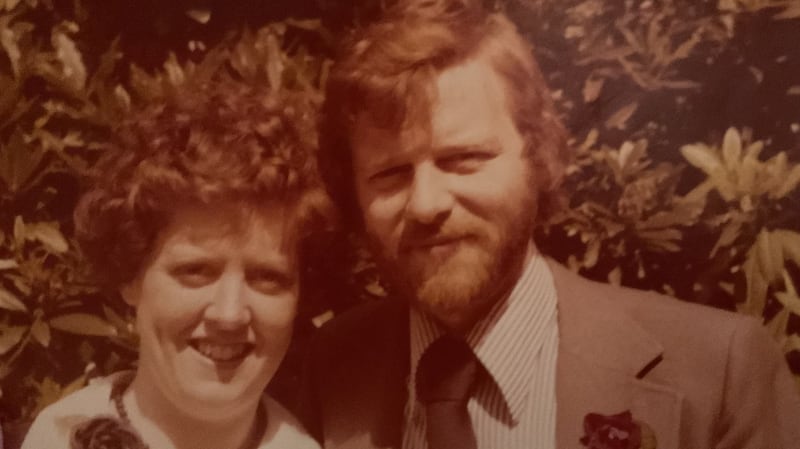
Des remembers trying on “a gaudy checked suit” in the changing room when the building shook. The bomb went off at 4.29pm. Some of the injured were brought into the shop. “Their injuries weren’t severe – we tried to do what we could for them,” Beryl recalls.
My father’s younger brother Dick happened to be on Castle Lane at the same time. He was in town with a girlfriend outside British Home Stores, a few doors down from the Abercorn. He recalls the restaurant’s glass and window frames exploding outwards. Nobody hung around. Dick’s fear was that a second device may have been planted targeting police attending the scene.

My parents joined the walking wounded leaving the scene for buses home. By the time my mother started her night shift at the hospital later, the extent of the bomb’s dreadful toll began to emerge. It was a small bomb, estimated at between 5 and 10 pounds, but in the crowded Abercorn, with its cramped space, the impact was horrific.
Friends Ann Owens (22) and Janet Bereen (21) were at a table on the left side of the restaurant, at the back. The bomb was placed under their table. They were killed instantly. More than 140 people were wounded, some with life-changing injuries.
The blast sent shards of furniture and delph flying, burying staff and customers in dust and rubble. Sisters Rosaleen (22) and Jennifer McNern (21) were sitting at a table near Ann and Janet. Rosaleen lost both legs, an arm and an eye. Jennifer lost both legs. Three others lost limbs. Another three lost eyes.
I was doing a round with the night ward sister and I just broke down. It hit me. I got upset. I was telling her where I had been and then it hit me
Belfast man Billy Stevenson, now living in the US, recalls himself, then just 10 years old, running back after hearing the blast to see if he could help. But he was paralysed with fear when a man emerged with a large splinter – what looked like the leg of a chair – piercing his leg.
“The man looked at me and I just then ran away from it. I couldn’t stay. I couldn’t help. That has stayed with me all those years,” he says.
Working that night in the hospital, the events of the day caught up with Beryl McGettrick. “I was doing a round with the night ward sister and I just broke down. It hit me. I got upset. I was telling her where I had been and then it hit me,” she recalls.
In the Royal Victoria Hospital next door, eight operating theatres were in constant use for six hours treating the wounded. Belfast had suffered bombings in those early years of the Troubles but the injuries had not been on this scale. For the first time, the hospital triggered its emergency plan.
Among the doctors called in were Dr Fred Bereen, an anaesthetist. He assisted on the operations, unaware that his own daughter, who worked as a radiographer in the hospital, had been killed in the explosion. On her hospital shift, Beryl was unaware that two girls she went to school with – one a childhood friend and long-time neighbour – had been killed.
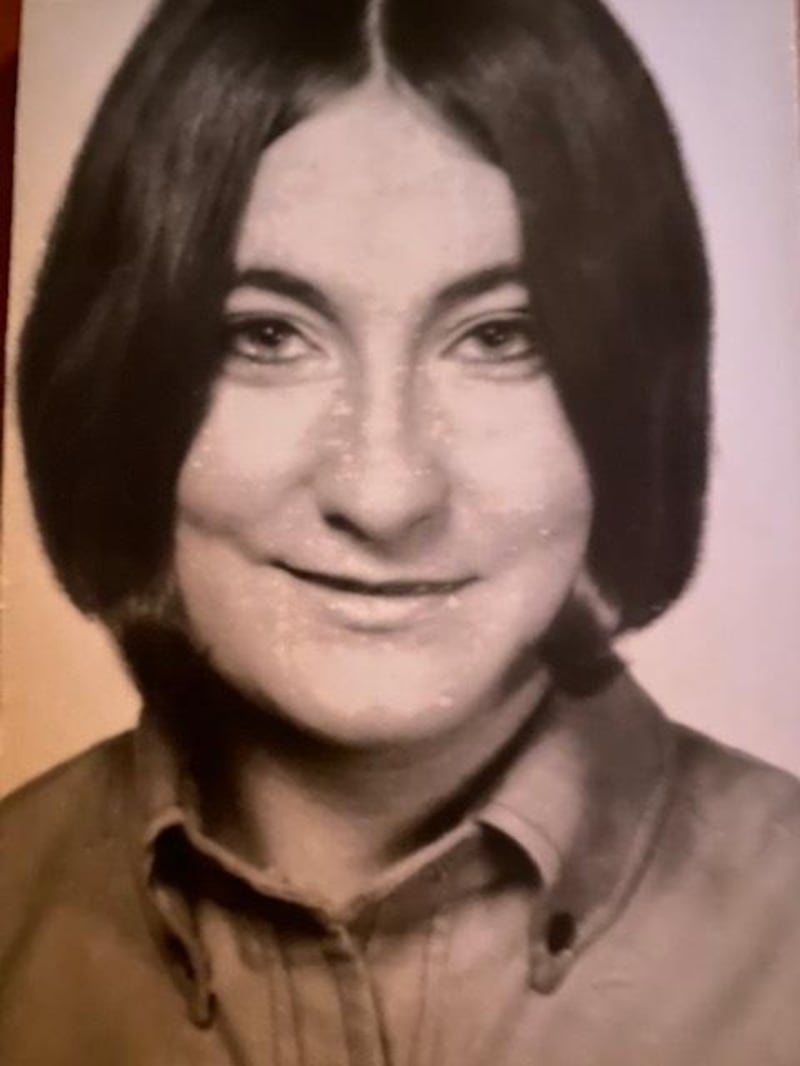
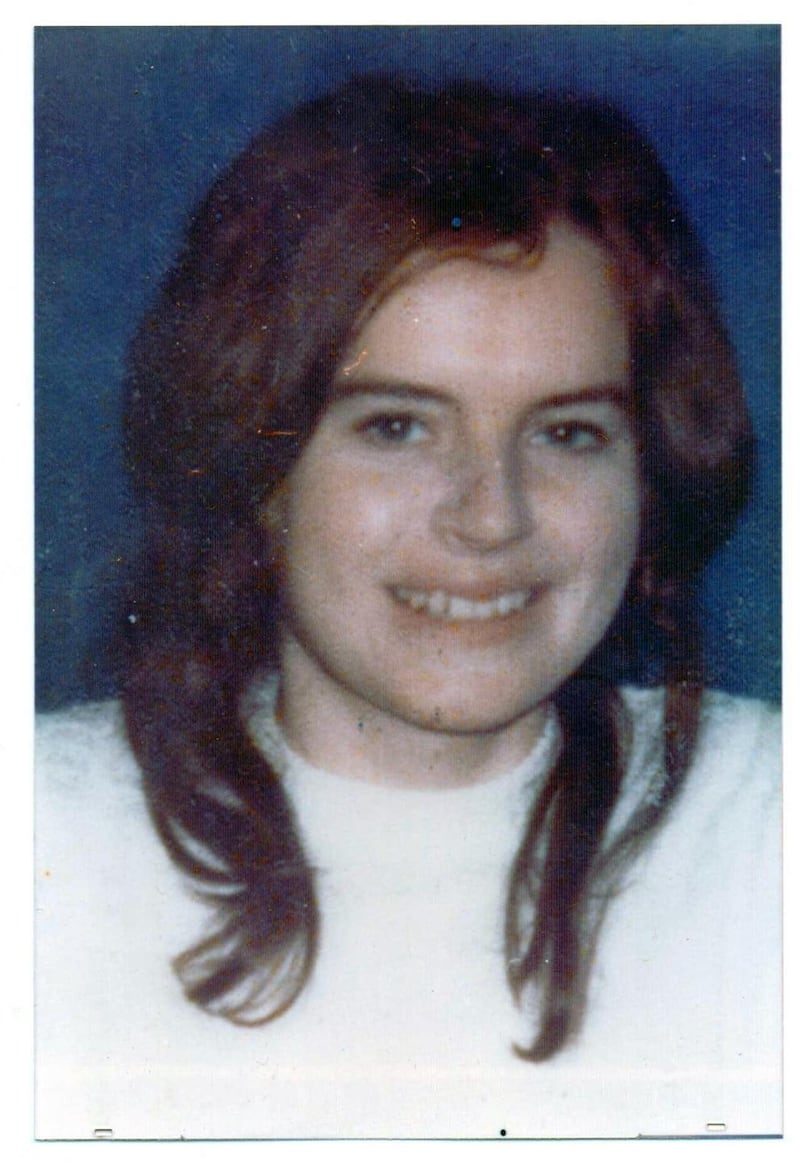
Growing up, the five Owens children and the four youngest McGettrick children played together on their street off the Ormeau Road in south Belfast for years until the Owens family moved to north Belfast in the 1960s. Beryl remembers Ann's father, Fergie, piling all the children into his big black car on morning lifts to St Bernard's Primary School. Beryl went to the same secondary school as Janet and Ann, Rathmore Grammar, where she remembers them being close friends.
“Ann was lovely, very gregarious and a very sensible eldest of the family,” she says.
Three months before the bomb, Ann’s younger sister Jane remembers her sensible older sister trying to comfort her after a close shave with another IRA bomb.
This time the target was the RUC police station around the corner from their north Belfast home. On October 29th, 1971, Jane and her mother were at the local shop when an IRA unit held them and other shoppers at gunpoint as they armed a bomb. They were ordered out of the shop shortly before the blast destroyed the Chichester Road police station next door, killing RUC inspector Alfred Devlin.
Later, at home, Ann tried to reassure a shaken Jane.
"She said: 'We have had ours.' She was talking about the Troubles and this sort of 'lightning doesn't strike twice' attitude. I took it that what she meant was: these things happen and once you have had one, that's you safe," Jane Kell (nee Owens) tells The Irish Times.
Ann believed her "one" was yet another bombing, two months earlier, when her workplace, the offices of the Electricity Board of Northern Ireland, were bombed by the IRA. One man, Harry Beggs, was killed in that attack on August 25th, 1971. Ann was one of 35 injured in the blast.
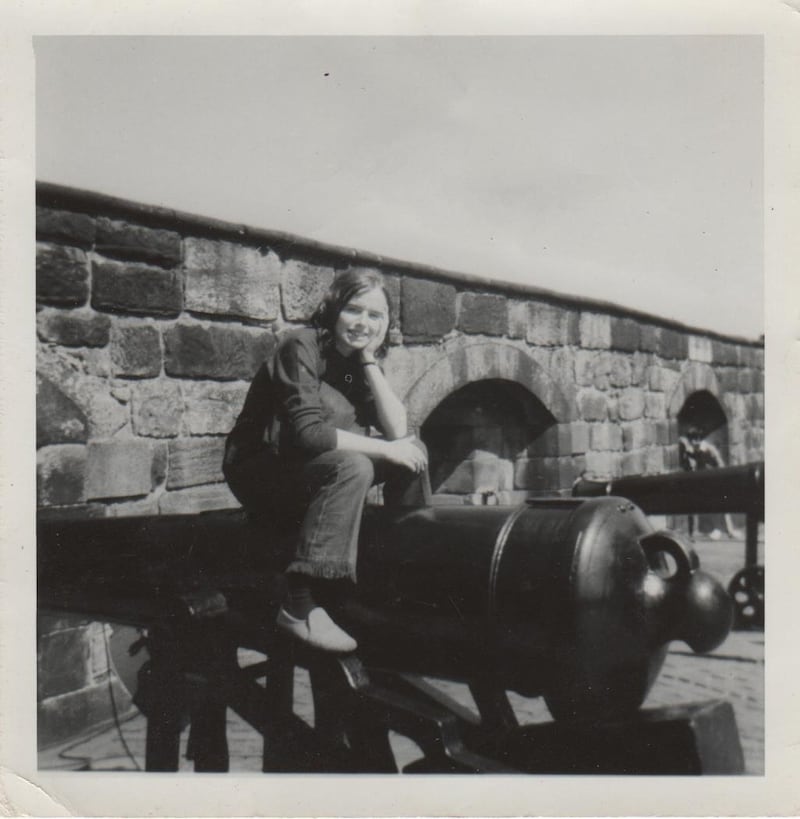
Jane recalls her sister, after recovering in hospital, worrying that scars at the back of her head from her injuries could be seen and getting a new hairstyle to cover them.
She has many other memories of her big sister, “silly wee things”, such as that Ann had wavy hair which their sister Mary would straighten with an iron, such as how she loved Elvis Presley, such as how she knew when Mary had borrowed something from her wardrobe. Ann was impeccably neat and tidy.
They took the seats that the bomb was under. Two other seats became available and it was up in that top left-hand corner so we were all sitting in the same area
“She was soft-spoken but very determined and boy, could she debate, but she would never have raised her voice. She could have held an argument with anyone,” says Jane.
Ann left school at 16 to join the civil service but later returned to her studies, completing her A-levels and later a computer programming course in order to land a better job. “If she wanted something, she really did work at something,” says her sister.
On the day lightning struck the second time for Ann, Jane remembers the only thing out of place in her bedroom was a belt hanging over a chair. It was a typical weekend: Ann met Janet in town to go shopping, “just like you did on the Saturday,” says Jane.
“She went for a coffee and never came home.”
Jennifer McNern remembers queueing for a table at the busy Abercorn with her sister. She recalls Ann Owens and Janet Bereen being in front of them in the queue.
Two young girls skipped the queue and took a table but left a short time later. Ann and Janet took their table. McNern thinks what might have been: had Ann and Janet left the queue earlier, it might have been her and her sister Rosaleen at that table.
“They took the seats that the bomb was under. Two other seats became available and it was up in that top left-hand corner so we were all sitting in the same area,” says McNern.
There is a gap in her memory about what happened next.

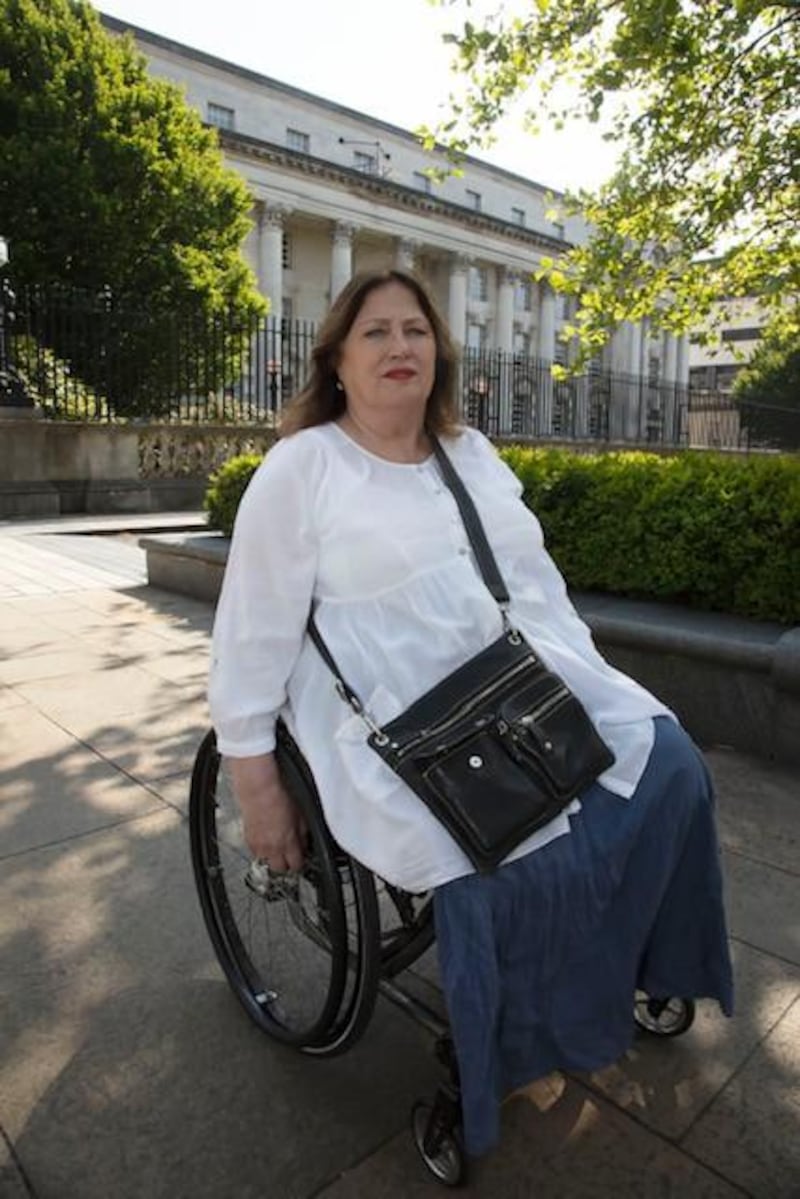
“I don’t remember the bomb going off. I woke up in hospital and didn’t know where I was or why I was there,” she says.
Today, she reflects not on her own trauma but on what her mother, Teresa, a Donegal woman, went through. She had to be sedated at the hospital when told her two daughters had both lost their legs. While Jennifer and her sister recovered, her mother prepared their home for their return.
“Before we came home, after rehabilitation, she moved all our shoes and clothes out of the house. To think of my mother doing that breaks my heart even to this day,” she says.
Jane Kell recalls the resilience of her own mother, Joan, carrying on and never objecting when they wanted to go out on their own, just as Ann did.
“I remember years later sitting down with mum and saying to her one time: ‘How did you cope?’ Thinking how do you cope with losing a child?” she says.
“And she said to me: ‘No matter what I felt, I had to get up and go on because there were still four more of you. I had to get up and deal with things.’”
The fathers struggled too.
Fergie Owens and his son Dick had the difficult task of identifying Ann’s body. When Ann didn’t come home, the family just assumed that she had been caught up in the traffic chaos that descended on Belfast after the bombing. When the police knocked on their door later that Saturday evening, the family knew something serious had happened. Later, Dick recognised the rings Janet was wearing, which helped to identify the two friends.
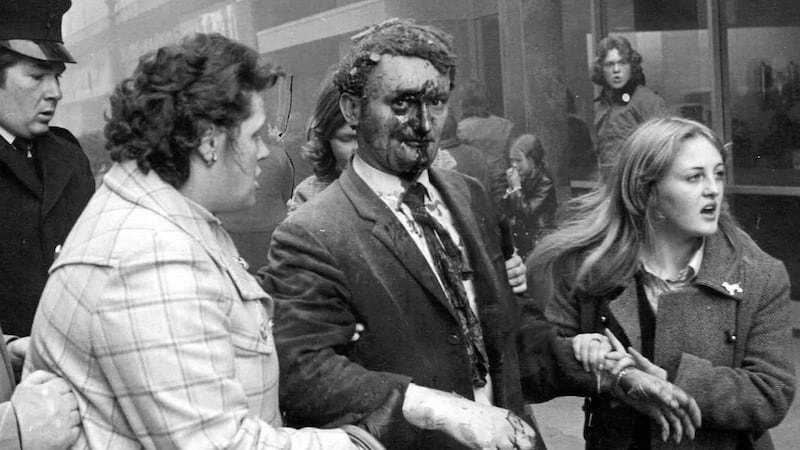
Jane says that her father, for the rest of his life, kept his feelings about what happened to his eldest daughter “quietly within him”.
“He never discussed it and nobody ever asked him. I think we always felt growing up that if he didn’t want to talk about it, there were things he didn’t want to discuss,” she says.
Helena Bereen, Janet's sister-in-law, says Janet's father was called back to the hospital later that night to identify her body after returning home following hours treating the injured and maimed. She remembers Janet as "a lovely, lovely girl" and father and daughter being "very close".
“He sort of went into himself. It really affected him very deeply,” she says.
The devastation caused by the Abercorn bomb affected anyone connected with it. Dr John Robb, a surgeon who worked on the victims through Saturday night at the Royal Victoria, spoke directly to the IRA in interviews the next day. He begged them to desist from such violence as it would never lead to a united Ireland.
“What do they think they are going to achieve? When it is over, do they believe that they can put the bits of our society together any more than we surgeons can put bits of a human body together when they have been destroyed irrevocably?” he told reporters.
Partly motivated by the Abercorn tragedy, Robb wrote a pamphlet in 1972 setting out a path to political and social reconciliation as a solution to the Troubles through an all-Ireland agreement. He went on to form the New Ireland Movement and sat in the Seanad in the 1980s.
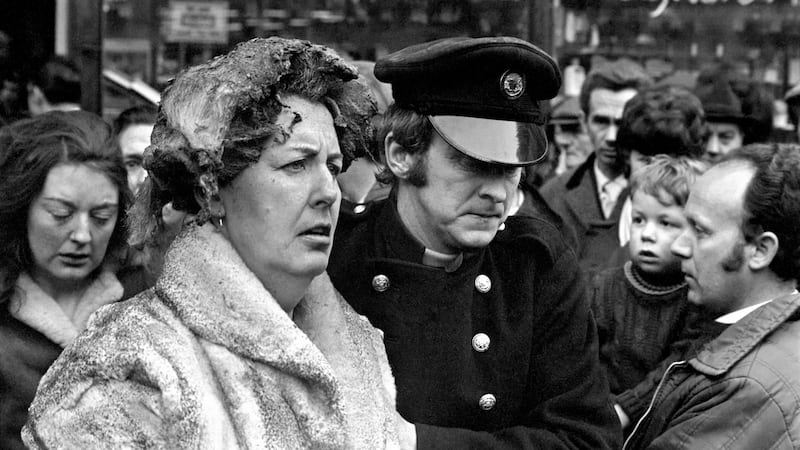
Unionist politician Tom Caldwell, moved by the fact that his daughter was friends with two women mutilated in the blast, took the unusual step of travelling to the Republic to meet Provisional IRA leaders face to face, imploring them to end the violence.
He told them: “If I were part of your organisation – and I detest everything you stand for – I would be saying: ‘For God’s sake, stop – it’s counterproductive.’”
On the TV news that night, a young reporter broke down during a live report, traumatised by what he saw. In his 1972 poem, A Slight Hitch, Belfast poet Padraic Fiacc wrote about “the ghost-faced boy-broadcaster fresh from the scene, broke down into quivering lips and wild tears.”
Well-known broadcaster Gloria Hunniford, then a young BBC reporter, was off work that day and shopping in the city centre with her youngest son.
“We were right outside that restaurant – we could have been in there,” she says, a thought shared by many others.
It was the first time I had come across the evidence of what happens to people in a bomb blast. I remember trying to do the report and tears rolling down my face
The following day, in her first UK-wide report for the BBC, Hunniford was asked to visit the lost property office to look at the belongings collected from inside the Abercorn.
“I wasn’t prepared for the enormous shock of what I found,” she says.
Among the items were a leather handbag blown completely flat by the blast, a pair of tights with one leg blown off, a children’s teddy bear burnt down one side and a driving licence belonging to one of the girls who died.
“It was the first time I had come across the evidence of what happens to people in a bomb blast. I remember trying to do the report and tears rolling down my face,” she says.
Republicans never claimed responsibility for the bombing but the Provisional IRA was blamed for it.
Three decades later, the Historical Enquiries Team (HET), the Police Service of Northern Ireland unit set up to investigate unsolved murders during the Troubles, looked back at the evidence. They found that a minute before the bomb detonated, an anonymous male caller, later traced to a local pub, told a telephone operator that a bomb would go off in Castle Lane but gave no specific location.
The HET report includes various eyewitness accounts that capture the confusion of the comings and goings at a packed restaurant on a busy Saturday afternoon. Two accounts stand out.
Two eyewitnesses, another set of sisters, sitting in the left-hand side of the restaurant where the bomb was located, recalled seeing two young girls at a table opposite. The girls paid their bill and left, leaving behind a large handbag between the seats. The sisters later left the restaurant and a short time later heard the explosion. One of the sisters described one of the girls as being about 16 years of age with a roundish face and dark hair.
Another witness, who was in a nearby shop when the explosion occurred, moved through the shop and ended up standing between two girls, one of whom laughed and clapped her hands, and said to the other: “It’s went off.”
“The other girl nodded and muttered something inaudible,” the report says.
The girl doing the talking was described as being about 15 years of age, short and of thin build. She had a freckled complexion, brown eyes and fair hair. She was wearing bell-bottom trousers and a medium-length dark-coloured coat. She was carrying a hip-length suede-type shoulder bag.
The other girl was described as having dark hair.
Jane Kell believes these two young girls were probably the bombers but nobody was ever charged. This has never bothered her.
It had a searing impact on the public psyche. These were young, innocent people, young girls, torn to pieces
“I know a lot of people seem to struggle with the fact that nobody was caught for some of the atrocities in Northern Ireland. Nobody was ever caught for the Abercorn but that is not going to make me feel any different about what happened,” she says.
Within IRA circles, the group privately acknowledged its role in the bombing.
“I remember being told that the IRA did the Abercorn,” says a republican source. “I got the impression that it was a f**k-up, that it wasn’t meant to be the Abercorn.”
The deaths of innocent civilians and the horrific injuries inflicted in a social place that was popular with everyone, Catholics and Protestants alike, meant the IRA was never going to claim it officially.
“It was a disaster for them,” says the republican source.
It brought a strong backlash including in nationalist areas because Ann and Janet were both Catholic, as were many of the injured, including the McNern sisters.
For the wider community, the Abercorn was a moment of severe trauma. But the trauma was personal, too, because of people’s own connections with and memories of the place.
The Abercorn opened up that Dantean vision of hell. It had a searing impact on the public psyche. These were young, innocent people, young girls, torn to pieces
A coroner later described the bombing as “pathological murder of the most depraved kind”.
The Abercorn marked the start of no-holds-barred attacks by the Provisional IRA in which bombs were detonated in densely packed parts of Belfast city centre. There was the Donegall Street bombing that killed seven and injured 148 just over a fortnight later, and Bloody Friday four months later when 22 IRA bombs across Belfast city centre killed nine and injured 130. These acts of violence contributed to 1972 being the bloodiest year of the 30-year Troubles.
"The Abercorn opened up that Dantean vision of hell," says Northern Ireland historian Dr Eamon Phoenix. "It had a searing impact on the public psyche. These were young, innocent people, young girls, torn to pieces."
“It was the big changer for us,” says my father, Des Carswell. Subsequent events in the two years that followed pushed my parents to a final decision to leave Northern Ireland in 1974.
One night in September 1973, a loyalist gunman fired six shots through the front window of the home of my grandparents – my Waterford Catholic grandmother Alice Carswell (nee Kervick) and my Protestant-born Catholic convert grandfather Hugh Carswell, better known as Paddy.
Their Catholic house on the predominantly Protestant Cregagh estate had been attacked several times before because of the family’s religion, but the gun attack was the final straw. Nobody was hurt, but the message was clear: it was time to get out.
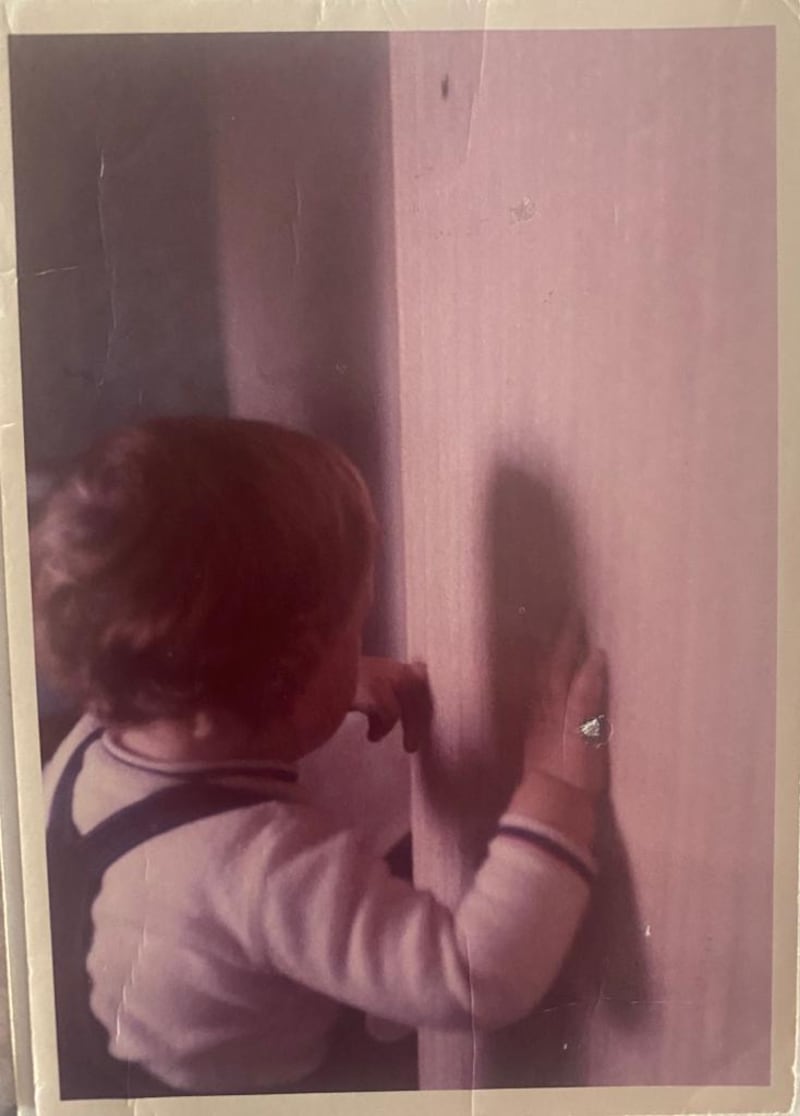
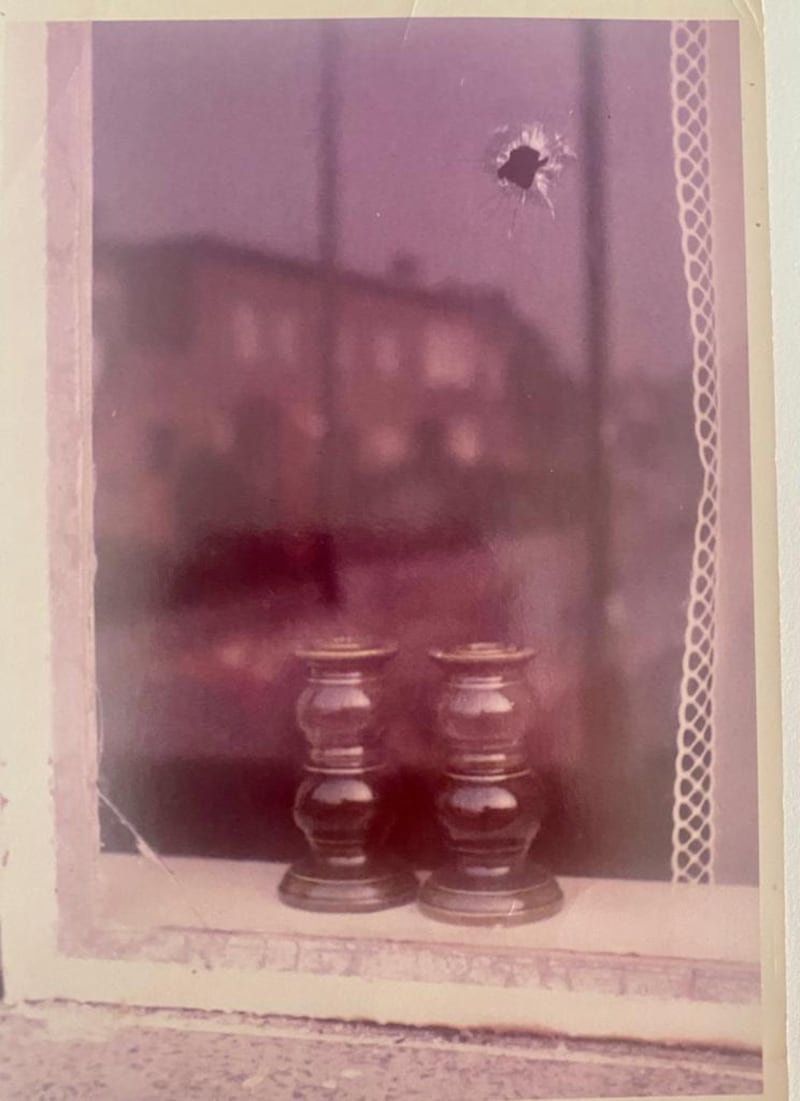
My uncle Hilary remembers seeing the flashes of the gunshots from an upstairs bedroom and pulling his brother Dick to the ground. The family has photographs of the bullet-holes, including one snap of my cousin Jaimie, then a toddler, with his finger in one of the holes.
The day after the attack, the Irish News newspaper carried a brief, two-paragraph article about the shooting at the bottom of its front page. Within weeks, the Carswells had packed up and relocated to Catholic west Belfast.
"At that stage, there were 12 Catholic families living in the Cregagh estate. That was all that was left. And then there were 11," says Hilary Carswell.
For my parents, other fears grew during 1973 and 1974: the increasing number of loyalist barricades randomly stopping people and the number of innocent people murdered as they went about their daily lives and becoming targets of one group or another, depending on the side of the street they walked down. The general uncertainty of it all filled life with a constant dread.
“You just didn’t know what would happen,” says Des.
“It became quite sinister,” says Beryl. “You weren’t safe. There were definite no-go areas around the city and all social life stopped. The unpredictability of the pandemic brought me back to the way it was in Belfast all those years ago.”
'I don't need anniversaries to remind me what happened that day,' she says, 'I live with it every day''
The Ulster Workers’ Council strike of May 1974 brought Northern Ireland to a standstill with electricity blackouts, water restrictions and petrol shortages – and more loyalist barricades across the city. Enough was enough. It was time to leave. The Carswells wanted a different way of life and, following the arrival of my older brother in 1973 and with a good job opportunity elsewhere for my father, they sold their Belfast home and moved to the west of Ireland.
“Those final years in Belfast were a difficult time,” says my mother.
Jane Kell says her family will gather this week in Belfast to remember Ann on the 50th anniversary of her death. Time, she says, makes “a lot of the hurt go away”, but she thinks of the many birthdays, Christmases and family events that Ann was not a part of.
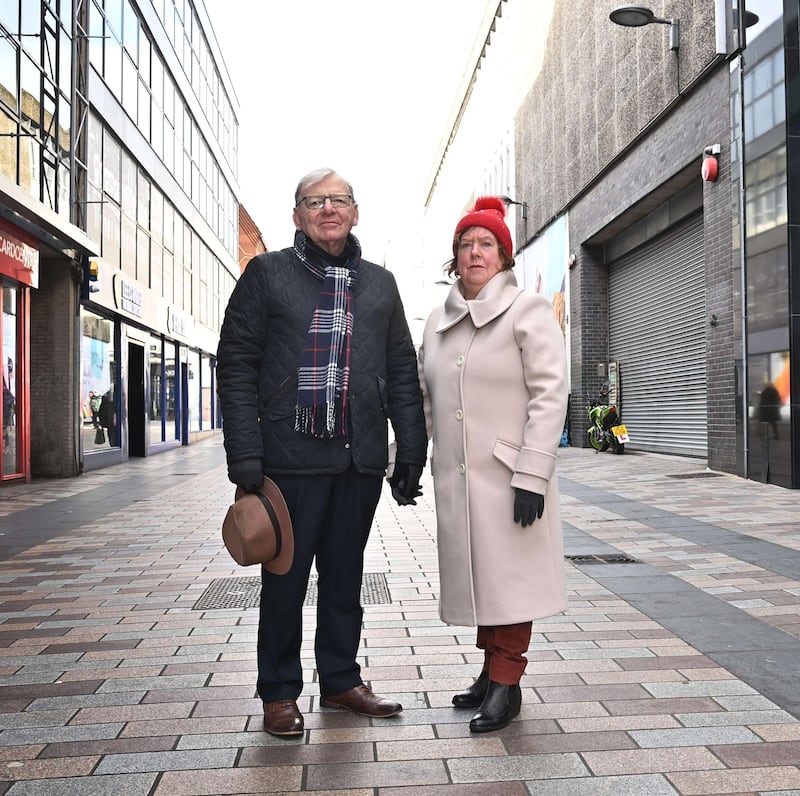
Her brother’s granddaughter is now the same age as Ann when she was killed, putting in perspective the time that Ann has not been a part of their lives. When they were growing up, Jane considered her older sister Ann an adult. Now she looks back on her as only “a child”.
“She will always be 22,” she says.
For survivor Jennifer McNern, this anniversary, like all the others, carries no significance.
“I don’t need anniversaries to remind me what happened that day,” she says. “I live with it every day.”
















